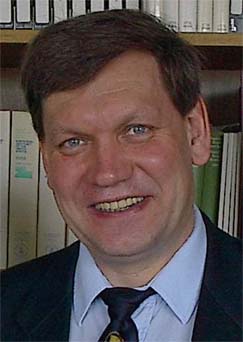Scientific Meeting in Moscow - “From Homo sapiens to Homo sapiens liberatus”
-- 'Books Forum' blog
-- 'Health Studies' blog
Dear Friends!
We are pleased to share with you the program of international scientific conference on aging and longevity, which was held at Moscow State University recently (with our participation and presentation there)
You can see the Power-Point-Presentation of our study here:
"Comparative analysis of parameters of human ontogenesis and senescence"
http://longevity-science.org/Ontogenesis-Senescence.ppt
Any comments and suggestions are most welcome!
========================================
Workshop “From Homo sapiens to Homo sapiens liberatus”
25 May
9.15-9.45 Registration, coffee
9.45-12.00 Chairman, D.B. Zorov
9.45-10.00 V.P. Skulachev. Introductory remarks
10.00-10.45 V.P. Skulachev and M.V. Skulachev The present state of the art of SkQ Megaproject
10.45-11.00 Discussion
11.00-11.15 B. Cannon. Effects of SkQ1 on progeric “Mutator mice” (report 1)
11.15-11.30 Discussion
11.30-11.45 J. Nedergaard. Effects of SkQ1 on progeric “Mutator mice” (report 2)
11.45-12.00 Discussion
12.00-12.30 Coffee break
12.30-14.30 Chairmen, B. Cannon, V.I. Kapelko
12.30-12.45 D.B. Zorov. Effects of SkQs on kidney and brain ischemia/reperfusion injuries.
12.45-13.00 Discussion
13.00-13.15 B.V. Chernyak. SkQ1 accelerates dermal wound healing and arrests the age-dependent decline of this process
13.15-13.30 Discussion
13.30-13.45 N.G. Kolosova. Effects of SkQ on cataract and retinopathies in OXYS rats.
13.45-14.00 Discussion
14.00-14.15 A.A. Zamyatnin. Clinical trials of the SkQ1 drops in treatment of “dry eye”
14.15014.30 Discussion
14.30-15.45 Lunch
15.45-17.45 Chairmen, J. Nedergaard, E.I. Rogaev
15.45-16.00 V.N. Anisimov. Effects of SkQ on SHR and HER-2 mice.
16.00-16.15 Discussion
16.15-16.30 F.F. Severin. Two mechanisms of antioxidant activity of SkQs.
16.30-16.45 Discussion
16.45-17.00 D.A. Cherepanov. Possible role of the Complex III bound cardiolipin dimer in initiation of mitochondrial lipid peroxidation
17.00-17.15 Discussion
17.15-17.30 S. A. Nedospasov. Unexpected features in mice with mutant cytochrome c.
17.30-17.45 Discussion
17.45-18.15 Coffee break
18.15-18.30 R. Zinovkin. How counterproductive programs could escape elimination by natural selection?
18.30-18.45 Discussion
18.45-19.00 V. Gorbunova. Naked mole-rat, a rodent lacking the senescence program, in comparison with his senescing relatives.
19.00-19.15 Discussion
19.45-20.15 Chairmen, G. Libertini, L. Gavrilov
19.15-19.30 A. Siluanov. Naked mole-rat, a cancer-resistant animal.
19.30-19.45 Discussion
19.45-20.00 H.S. Saunders. Programmed vs stochastic aging mechanisms.
20.00-20.15 Discussion
26 May
9.30-12.00 Chairmen, J. Mitteldorf, S.A. Nedospasov
9.30-9.45 K. Lewis. Examples of counterproductive genetic programs in prokaryotes.
9.45-10.00 Discussion
10.00-10.15 N. Gavrilova. Comparative analysis of parameters of human ontogenesis and senescence.
10.15-10.30 Discussion
10.30-10.45 G. Libertini. Aging in wild nature.
10.45-11.00 Discussion
11.00-11.15 T. Goldsmith. Biological functions of aging.
11.15-11.30 Discussion
11.30-12.00 Coffee break
12.00-14.00 Chairmen, T. Goldsmith, B.V. Chernyak
12.00-12.15 J. Mitteldorf. Evolvability, a necessary component of biological evolution
12.15-12.30 Discussion
12.30-12.45 C.J. Hauser. Appearance of mitochondrial DNA and formyl methionine in the blood induces programmed death of organism, resembling septic shock.
12.45-13.00 Discussion
13.00-13.30 General discussion
13.30-13.45 A.G. Ryazanov. An enzyme which shortens the lifespan
13.45-14.00 Discussion
14.00-15.30 Lunch
15.30-16.45 Discussion on establishment of the Homo sapiens liberatus (HSL) movement. Chairman V.P. Skulachev
16.45-17.00 Concluding remarks
========================
Abstract of our presentation:
Comparative analysis of parameters of human ontogenesis and senescence
Natalia S. Gavrilova and Leonid A. Gavrilov
Center on Aging, NORC and The University of Chicago
The idea of this study is to compare standard deviations for parameters, which are known to be determined by the developmental program (such as ages of sexual maturity) with variation of characteristics related to aging (such as menopause and death).
One of the arguments used by the opponents of programmed aging is a too high variation in individual lifespans compared to the observed variation of programmed events (such as the age of sexual maturation). The main objective of this study is to test the validity of this argument.
Presentation provides the first results on this topic of scientific studies. In particular, data available in the scientific literature on variability of ages at sexual maturation (menarche), menopause and death are compared to results obtained from the nationally representative survey of adult population of the United States (MIDUS) as well as official life table data.
It is shown that standard deviations for age at onset of menarche are about 10 times smaller than standard deviations for ages of death. Such a difference corresponds well to a difference in mean values of ages when menarche and death occur. Thus, the adjusted variability (coefficient of variation) for age at death is of a similar order of magnitude as that for ages at onset of menarche.
=======================================
Comments and suggestions are welcome!
Longevity Science Blog
and
Scientific Meeting in Moscow - “From Homo sapiens to Homo sapiens liberatus”
Shorter weblink:
http://tinyurl.com/Moscow-2010
.
Labels: ageing, aging, homo sapiens liberatus, human ontogenesis, Leonid Gavrilov, longevity, moscow, Natalia Gavrilova, senescence, skq, Vladimir Skulachev





